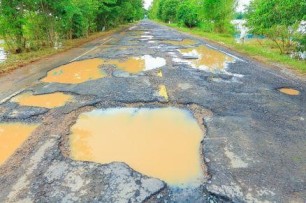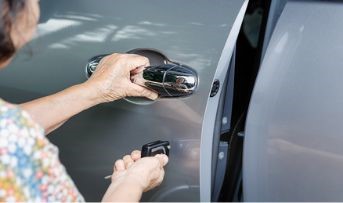General Insurance Blogs, Articles & Updates by - Magma HDI
Have us call you
- RENEW YOUR POLICY
- BUY NEW POLICY

Understand these smart tactics that car salespeople won't want you to know
Buying a car is more challenging than it seems. The salesperson uses many tactics to prevent their buyers or sellers from negotiating. Usually, buyers who lack detailed information about car sales and the buying process fall victim to these tricks the salesperson uses to draw more profit.
You also have to consider various things, such as auto loans, RC transfers, and hidden charges, when estimating the price of the car. So, you can create your strategy against these persuasive tricks and get your choice of car at a reasonable price. Here are some tactics that are commonly used to influence the customer.
1. Psychological profiling:
The car salespeople use the scripted questions to break down the needs and vulnerabilities of potential customers. These salespeople are experts in persuading people. The first question most car salespeople ask is about your budget. If you answer this question, you will show a vulnerability to car salespeople.
You should refrain from discussing your budget, family needs, vanity, and urgency to buy and ask for a test drive before signing papers. If you find a car you want, negotiate the price and leave trade-ins and add-ons for another discussion.
2. The Ben Franklin close tactic:
Most car salespeople use this classic tactic to fool the customer into buying a specific car. In this method, they draw a line down the middle of a piece of paper and list the reasons to buy or not buy the particular car. The information from the salesperson is either half true or false. You should avoid falling for this trap and becoming a victim of their motive.
3. The Porcupine close tactic:
The car salespeople use another tactic that includes a question starting with "if." For example, "If I can get you this monthly payment, will you be willing to buy this car today?" Car salespeople use this strategy to find a buying trigger in their customers.
When your car salesperson asks you this type of question, you should answer it with a negative. Instead, telling your car salesperson that you are negotiating with other dealers to get the best deal.
4. The waiting game:
When you go to your car salesperson to buy a car, there are salespeople, a team leader, a general manager, and more levels of leadership. They waste your time and trick you into selling what they want. If your car dealer takes too long to start moving the deal, you should call the deal off.
5. Look after the overall cost of the car:
People research the price of the car and divide the numbers into a down payment and a monthly payment. Most car dealers offer you monthly payments. You should ask them about the total price of the car and their best offer.
You can use an online car affordability calculator to check how expensive a car you can afford. Stay in the range and consider other things such as dealer fees, car insurance, and more. Choose the best car insurance company in India to get reliable insurance at the right price.
6. The impending event tactic:
Car salespeople use another tactic to sell their cars without negotiating. In this tactic, the car salesperson says that you need to buy this car today to take advantage of a big opportunity to buy it, or some other customer will get it.
You should refrain from showing any urgency and telling the car dealer in their eyes that if you come back tomorrow, they will not sell you this car.
These were a few ways to smartly deal with the tactics of salespeople and outwit them. Always stay alert while making such big decisions. Rely more on your research, compare different brands and categories, and take a test drive before the final purchase.
It is compulsory for people who buy a new or used car to get car insurance. When you find a strategy against the car salespeople's tactics, you should also look for the best car insurance company in India. Car insurance brings you many benefits, including personal accident cover, no claim benefits, damage or loss to insure a car, and third-party liabilities. Buy one today to make your driving experience safe and convenient.
Click HERE to buy insurance from the best car insurance company in India.
Disclaimer: The information provided above is for illustrative purposes only. To get more details, please refer to policy wordings and prospectus before purchasing a policy.

Here are a few potholes survival tips while riding a bike during monsoon
Due to heavy downpours every year, the Indian roads are severely hit and damaged. The potholes and cracks make the roads less motorable, and vehicles have to find their way safely by tackling them.
Potholes are dangerous for driving during the monsoon and rainy seasons, especially for bikers. Alongside this, the extra danger of your bike's wheels slipping on roads adds to the stress of accident possibilities.
Riders must exercise extra caution for a safe ride during the monsoon season. If you drive a two-wheeler in the rain, you should keep the following points in mind.
1. Do not disregard tyre health:
Before riding a bike or scooter in the rain, remember to check the tyres. Your bike might easily skid on the road if the traction in its tyres is worn down. Therefore, change the tyre right away.
2. Attentiveness:
Riding safely in the weather largely depends on being aware of your surroundings. Keep an eye out for potholes and puddles since they can be deeper and bigger than you expected, or there might be an open manhole beneath the water. Stay away from slicks of oil on the road that can be very slippery.
3. Slow down:
Speeding your two-wheeler is strictly prohibited when it rains because it affects your ability to see through and impairs your vision. In addition to the poor vision caused by rain, driving slowly will also give you better control and allow you to brake effectively in an emergency. Your scooter or bike may skid if you apply the brakes suddenly. Potholes are frequently obscured by water and are difficult to see. Take complete judgement of the road and maintain a steady speed to get enough time to tackle the potholes without losing balance.
4. Keep a safe distance:
Keep a safe gap between your two-wheeler and other vehicles on the road, whether in front of you, behind you, or even on the sides. You run the risk of hitting other vehicles when your vision is poor.
5. Using brakes correctly:
When it's raining, it's usually preferable to use the back brake so that your bike stops gradually rather than abruptly. Avoid applying sudden brakes as it might make the vehicle behind ram into you.
6. Stay off flooded roads:
In addition to causing you to veer into potholes, water exposure can harm your scooter or bike's exhaust.
Riding gear –
Investing in good waterproof riding gear can keep you dry. Your riding gear will protect you in an accident. These gears are
● Waterproof riding jacket: Invest in a waterproof riding jacket. To ensure that other road users see you, ensure the jacket has adequate reflective stripes.
● Waterproof riding pants: Wear waterproof riding pants to protect your lower body from the water.
● Gloves: Waterproof riding gloves keep your hands safe and grip tight on the handlebar.
● Helmet: Purchase a full-face helmet with a transparent visor. Immediately replace the scratched visor. To increase visibility, apply reflective tape to the front and back of the helmet.
The water puddles well conceal potholes. The bike's rapid movement and imbalance from riding over these puddles could cause you to lose traction. No matter how skilled a rider you are, a lack of traction and visibility can significantly damage your bike and cause you injuries.
Another crucial safety measure is an insurance. It is preferred to have robust bike insurance to protect your asset from unfortunate damages and repair and maintenance costs. A bike insurance equips you to deal with any accident on the road.
Keep a safe distance from other vehicles when you are riding. Look out for potholes and avoid over speeding your bike. Always remember to accelerate gradually and brake gently to prevent any jerky movement, and never miss having bike insurance.
Click HERE to buy the best bike insurance policy.
Disclaimer: The information provided above is for illustrative purposes only. To get more details, please refer to policy wordings and prospectus before purchasing a policy.

Why using a fancy number plate for your car can get you into trouble
Have you bought a brand-new car and are excited to hit the road? The first thing that the law requires is that you need a number plate on the front and rear to display the vehicle registration number. So many of us would love to go for a fancy number plate that makes our car look unique and cool.
But wait. Are you aware you can get into trouble using a fancy number plate for your car? Let us see how.
1. Fines:
According to the Central Motor Vehicles Rules, 1989, you must follow a specific format for your car’s number plate. It specifies the size of the number plate for light motor vehicles and passenger vehicles, respectively. It also specifies the font height and width to be used and the spacing between every font or number. It then specifies the colour combination according to your vehicle category.
A fancy number plate will usually violate one or more of the above guidelines. People go for fancy fonts and colour combinations, write the number to resemble some word or name, or change the size to make it look unique. In any of these cases, the traffic police can issue a challan and impose a penalty on you.
According to section 192(1) of the Motor Vehicles Act, fancy and improper number plates can be fined up to INR 5000. However, this penalty varies from one state to another.
2. Cancellation of licence:
Using a fancy number plate that does not conform to the law is considered illegal in India. Some states have a provision for cancelling the licences of repeat offenders who do not get their number plate changed according to the allowed format despite repeated challans and warnings.
3. Vehicle seizure and imprisonment:
If you choose to delete a number or two in the quest to make your number plate extra fancy, the police have the authority to seize your vehicle and register a criminal case against you. This can lead to your imprisonment as well.
4. Insurance claim:
A fancy number plate can indirectly impact the settlement of your car insurance claim, too, in the event of an accident. If the police have suspended your licence due to the faulty fancy number plate and you meet with an accident in your car, you cannot raise an insurance claim. This can result in heavy monetary loss to you if the accident is major.
Security concerns with fancy number plates:
Fancy number plates usually have fancy fonts that cannot be read easily. This can be troublesome for authorities to trace you or your car in case of theft, traffic violation, or even an accident. If the law starts permitting fancy number plates, criminals will start using this to their advantage.
It is natural that you would want a personalised fancy number plate after buying an expensive car. It will be your style statement and make your car look cooler. However, as mentioned above, a fancy number plate can get you in trouble.
So, stay out of it and make your life simpler by using a number plate that is permitted by law. Online motor insurance is another way by which you can make your life simpler and hassle-free. It has all the advantages of an offline policy and provides you the ease and convenience of choice, comparison, and quick claim settlement, all from the comfort of your home or office.
Click HERE to buy online motor insurance to protect your car against damages.
Disclaimer: The information provided above is for illustrative purposes only. To get more details, please refer to policy wordings and prospectus before purchasing a policy.

Which type of car alarm is right for your car
Even in a country like India, where unequal wealth distribution has persisted over the years, the demand for luxury goods has risen across different landscapes. While rural settings used to limit their investments to affordable luxuries such as 2-wheelers, that is no longer the case. Although comparatively small, the number of car owners in rural and semi-urban areas is growing.
As more people purchase cars, one cannot ignore their allied risks. The risk of damage and theft are the highest-ranking troubles of Indian car owners. While you can cover damages by buying the best car insurance in India, multiple systems can help prevent theft, but none to eliminate it. Owners are left with no choice but to protect their vehicles with the most-sophisticated systems that can deter burglary.
While a basic alarm system is installed in all cars, an aftermarket security system doubles the protection. The availability of too many choices makes it difficult to find the best option for your vehicle. Here is a list of all the types of car alarms to help you choose the best-suited system for your vehicle.
1. Audible alarm system:
Starting with the most basic anti-theft mechanism, a blaring alarm is usually provided in most cars. It makes for easy identification of an issue and alerts passersby to intervene. However, it is an outdated feature, considering that thieves have started tampering with cars to raise the alarm to divert people’s attention from the sound of breaking windows to steal the items inside the vehicle. While necessary, it is not a comprehensive solution.
2. Silent alarms:
A silent alarm does precisely what an audible alarm does- but inaudibly, and only alerts the owner who has the key. Being inaudible can be considered a boon or a bane depending on the result of the situation. Since owners are warned without a sound, the thief remains oblivious to being discovered. As there is no sound, nobody but the owner would be aware of the incident, leaving it entirely up to the owner to tackle the situation.
3. Immobilising alarm system:
The best option of the alternatives discussed so far is an immobilising system. Once the car detects a potential thief at work, it automatically locks the vehicle. The owner does not need to intervene since there is no risk of displacement.
However, in most cases, thieves look for valuable items in the car to steal rather than stealing the vehicle itself, making the system useless in such cases. Alternatively, a key is required to unlock the car, which is not difficult to attain considering the instances of petty thievery and copying the key itself or its electronic signal that opens the car.
4. Additional GPS tracking:
While GPS is a commonly used feature while driving, it can also help keep your car safe if you keep it on even when locked. This way, irrespective of the car alarm system, you will always have access to the car’s location and can track it down in emergencies.
Our recommendation:
1. Why stick to one when you can double up and be extra sure? We recommend adding multiple systems simultaneously to keep your car safe. While you can choose between audible and noiseless alarms, we urge you to purchase at least one of the above-mentioned systems.
2. Consider activating passive security systems rather than active ones. In the case of active alarms, you must trigger them each time after locking the doors, which is often forgotten. However, passive systems work without an additional push. While identifying the best car insurance in India, read the fine print to see if a specific type of alarm is required to be installed to cover robbery incidents.
3. Let the professionals at a registered service provider install your add-on security system to ensure proper activation.
Apart from your choice of alarm system, a vigilant watch, a safe neighbourhood, and buying the best car insurance in India are other crucial factors to keep your car safe from thieves and get compensated for the damage or loss due to acts of robbery.
Click HERE to buy the best car insurance in India.
Disclaimer: The information provided above is for illustrative purposes only. To get more details, please refer to policy wordings and prospectus before purchasing a policy.


